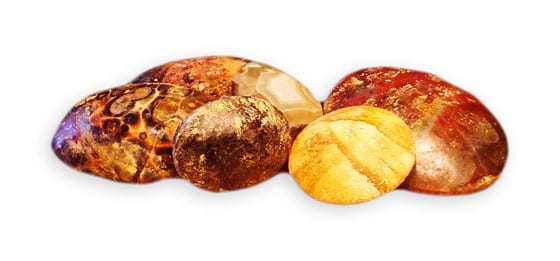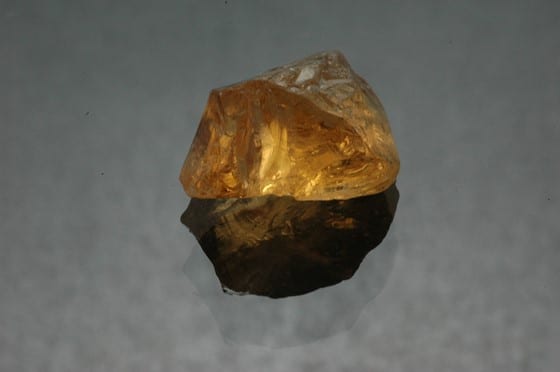
A gemstone is the name given to a piece of material, including a rock that has been cut and polished to be made into a jewelry piece. it is also used to make other accessories or into any small objects. They look stunning, pretty and utterly captivating. They come in different shapes and sizes and it is made to suit anyone’s tastes and needs. Whether it is a piece of jewellery or any form of craftsmanship, they are definitely eye-catching. Gemstones are mostly made from minerals.
There are many colors of gemstones. Let us name a few,
1. Black Gems – This includes Black Diamond, Black Star Sapphire, Onyx, Hematite and Black Spinel.
2. Blue to Violet Gems – This includes a lot of them like Amethyst, Axinite, Aquamarine, Blue Diamond, Blue Fire Opal, Blue Green Tourmaline and Blue Moon Quartz. There’s also Cat’s Eye Aquamarine, Lily Quartz, London Blue Topaz, Star Sapphire, Caribbean Blue Apatite, Chalcedony, Lolite, Grape Topaz, Lapis Lazuli, Lily Quartz, Purple Sapphire. Also, Swizz Blue Topaz, Sky Blue Topaz, Tanzanite, and Turquoise.
3. Colourless or White Stones – Here we have Diamond, Danburite, Goshenite, Petalite, White Quartz, White Sapphire, White Topaz and White Zircon.
4. Green Gems – Amazonite, Bloodstone, Amblygonite, Chrome Tourmaline, Chrysoprase, Demantoid, Emerald, Green Amethyst, Fluorite, Moldavite, Jade, Green Diamond, Kiwi Topaz, Malachite, Peridot and Trapiche Emerald.
5. Multi-coloured Gems – Alexandrite, Colour Change Sapphire, Ametrine, Aventurine, Bicolor Amethyst, Bi-Colour Citrine, Black Opal, Boulder Opal, Freshwater Pearl, Graffiti Quartz and Matrix Opal. Also, Medusa Quartz, Moonlight Topaz, Sardonyx, Semi Black Opal, South Sea Pearl, Jasper, Jelly Opal and Labradorite. In addition, Moonstone, Mother of Pearl, Mystic Topaz, Neptune Topaz, Sunset Mystic Topaz, Tahitian Pearl, Strawberry Quartz, Zultanite and White Opal.
6. Red to Pink Gems – This includes, Cherry Topaz, Flamingo Topaz, Kunzite, Mozambique Garnet, Morganite, Noble Red Spinel, Pink Danburite, Pink Diamond and Pink Sapphire. Also, Pink Spinel, Pink Tourmaline, Pyrope, Red Diamond, Rhodolite, Rhodonite, Rose de France Amethyst, Rubellite, Rose Quartz, Ruby, Star Ruby, and Vine Topaz.
Ever looked at a gemstone and wondered how it looks so beautiful and brilliant? Who is actually behind this fascinating transformation? Are we aware? If not, not to worry. Just keep reading to understand and know everything you need to know about lapidary.
From a raw stone to a finished stone, there is a lot of process that takes place for the finished stone to be the way it is. For anyone who is curious to know how these gemstones are made, here is your stop to know all about it to satiate your curiosity. Here is everything you need to know about lapidary. Stop right here and continue reading further. Most information is covered for your ease and convenience.

What does ‘Lapidary’ actually mean?
Lapidary comes from the Latin word lapis, which means stone.
Lapidary relates to engraving, cutting, or polishing of stones and gems. This does not include diamonds. In simple words, Lapidary means the art of cutting gems.
Lapidary is an artist or also known as artisan. Stones, minerals or gemstones are made into decorative items. It is the art of working with stones. Beautiful objects are created from gems. These objects are usually small in size. It is also one of the most skilful jobs is creating fine jewellery.
What is the History of Lapidary?
Lapidary dates back to as early as the Stone-Age. What is fascinating is that the early Egyptians developed cutting and jewellery fashioning methods for Amethyst, Turquoise, and Lapis Lazuli.
Even during those ancient times, fashion was a considered a good part.
Who is a Lapidarist?
Lapidarist is an artist or artisan. A person whose business is to cut, polish, set, or deal with gemstones is called a Lapidarist. He is an expert on gemstones or precious stones.
How to become a Lapidary?
For anyone, who wishes to make a career as a Lapidary should begin by obtaining a certification from an accredited gemologist certification program. While getting yourself a certificate, do keep in mind that this program should cover courses on,
– Gemmology
– Appraising
– Gem grading
The International Gem Society offers an Online Professional Gemologist Certification Course.
What are the Techniques of Lapidary Art?
There are four broad categories which are as follows,
1. Tumbling
2. Cabbing
3. Faceting
4. Carving
5. Drilling
– Tumbling: Rough gems are put through a tumbler. Tumbler is a revolving barrel with abrasives. As the gems surface starts to get smooth, finer abrasives are used to give it a fine polish. This technique produces higher levels of polish to the gems. There are various rocks which are popular for tumbling. There rocks are,
–
· Amethyst Quartz
· Clear Quartz
· White Quartz
· Rose Quartz
· Smoky Quartz
· Aventurine
– Cabbing: This method is also known as Cabochon Cutting. It is one of the most common forms of lapidary art. Cabochons, also called cabs, are gems that are cut with a doomed or curved top and a flat bottom. Sometimes, cutting can refer to cutting and grinding rough rocks and stones into slabs
– Faceting: It is the art of cutting gemstones. This ideally should bring out the brilliant of a gem. This is done with the help of faceting machines. This process involves grinding and polishing gemstones, and that is how the beautifully made stones are made. These gems are suitable for use in jewellery. Faceting machine is a device that allows placing and polishing facets.
– Carving: This is one the most complex and challenging process. There are several types of gem carving ways. The best one is known as Cameo. The carvers cut the cameo from seashells or agates. Cabochons are carved too. Here, if the design is cut at the top, it is called relief carving or also known as Intaglio. But, if the design is cut at the bottom, it is called Reverse Intaglio.
– Drilling: If one needs to drill into gemstones, it needs to be done with great care. When a hole is to be drilled into a gemstone, one needs to use a small diamond drill bits.
Let’s dwell more into this subject,
There are many ways a Lapidarist can work. But of all the ways, the most rewarding manner is to make various kind of jewellery with gemstones. Now who doesn’t like to wear jewellery? Surely, there will be a handful who will not be interested. But the majority of them would love to wear a beautifully hand-crafted piece of work in the form of jewellery festooned with gemstones. Let’s list out some of the different forms of jewellery,
– Pendants
– Rings
– Bracelets
– Neckpieces
Lapidary can incorporate into various projects.
What are the tools and other equipment’s used?
The below are the list of supplies to begin with. For any beginner, here is the list,
· Rock Slabs: To start from the scratch
· Burnishing Powder: To give the stones an extra shine. The shine is given once the stones are polished thoroughly
· Silicon Carbide: This makes the stones super smooth. Also, it enables it to be free from coarse scratches
· Safety Glasses: It is a must to protect your eyes
· Saw: Trim saw is used for smaller rock slabs and use a slab saw for larger pieces.
· Colander: To rinse the stones
One must know that with lapidary skills, there is a larger scope for creativity in jewellery. The stones can be cut into any shape or size of one’s preference.
Are there any societies and clubs for Lapidary?
There are many Lapidary clubs and societies throughout the world. Gymboree is the nationwide annual competition that takes place in Australia. Also, there is one in the USA, where every year the collection of gem and minerals are exhibited.
What are the different types of gemstones available?
There are more than two hundred varieties in gemstones. We will name a few of them for better understanding. The different types of gemstones are,
1. Beryl
2. Chrysoberyl
3. Corundum
4. Diamond
5. Feldspar
6. Garnet
7. Jade
8. Lazurite
9. Olivine
10. Opal
11. Quartz
12. Spinel
13. Topaz
14. Tourmaline
15. Turquoise
16. Zircon
There are nine traditional gemstones and there are as listed below,
– Ruby
– Diamond
– Red Coral
– Blue Sapphire
– Cat’s Eye
– Yellow Sapphire
– Emerald
– Natural Pearl
– Hessonite
This covers everything you need to know about Lapidary. Right from understanding about its history to the types of gemstones is here for easy availability.
The next time you pick up a gemstone and wonder how it is made to look so breath-taking beautiful, take a few minutes to think about what you read here. All the beautifully handcrafted pieces of jewellery with the sparkling gemstones used is the most amazing effort of a Lapidarist who is sitting there and creating masterpieces for us. Every piece that is crafted is the handwork of a Lapidarist who patiently creates piece after piece. So stop and admire the next piece you lay your eyes to pick for you, it is all thanks to a Lapidarist out there!
